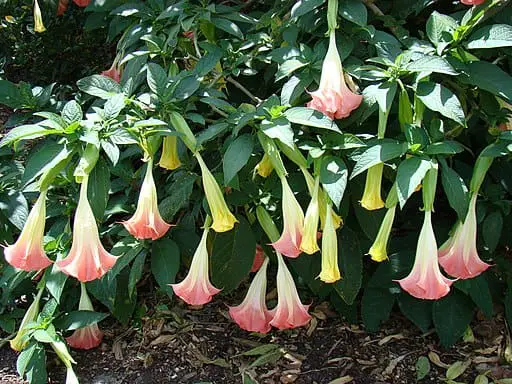Twig Blight is a fungal infection that attacks plants during the early days of spring and summer, as the new buds start sprouting and new leaves start to grow. This fungus attack leads to the death of the plant’s leaves and buds, especially terminal shoots and leaves as they are very weak and vulnerable. This in essence causes the plant to wilt and leads to abnormal growth of the plant. The young plants are more vulnerable to this fungal attack.
- Twig Blight on Juniper:
- Symptoms of Twig Blight Disease:
- Types of the Twig Blight
- Care and Prevention for Twig Blight Disease on Juniper:
- Purchase Plants carefully
- Plant at a distance
- Plant in rows and columns
- Plant Varieties that are resistant
- Create Air Passages
- Prune out the infectious branches and trees
- Plant them in full sunlight
- Avoid Sprinkler Irrigation
- Apply Fungicides
- Frequently Asked Question:
The Impact of this can be between moderate to severe, as the Twig Blight can quickly infect other plants in the surrounding area. During the attack, mostly the leaves of the plant turn pale green and they slowly start turning brown. This effect can spread from one branch to another branch and even another plant as well. Most of the time on the site of infection, Grey Cankers appear, in the same place the spore of the fungus also appears.

This disease impacts many different plants, Juniper Plants are one of their major victims.
Twig Blight on Juniper:
The Juniper plants are mostly impacted by the Twig Blight, that is why it is mostly called the Juniper’s Twig Blight. Twig Blight in the Juniper plants is mostly caused by Phomopsis, Kabatina, or Scllerophoma pythiophila. In most cases, the Phomopsis is the major cause of the problem in Juniper Plants. If you are planting the junipers in the moist environments they will thrive and quickly infect the whole yard.
As you may know, that spring is the time when the air contains moisture and there is a little warmth in temperatures as well, making it a perfect season for the growth of the fungus and attack.
Symptoms of Twig Blight Disease:
There are a lot of different symptoms that are seen in different plants, below is the list of possible symptoms seen in the different stages of the twig blight on different plants.
- The diseased shoots and buds start to lose their color and mostly turn into the pale green and then yellow and finally they turn into a dark brown bush.
- This impact of browning of branches can quickly spread throughout the plant.
- Mostly the terminal shoots, leaves, and buds are attacked as they are more vulnerable to attack.
- Fungi start producing the spores for its growth while it has destroyed the plant or shoots off the plant.
- The wind then takes these fungus spores from one shoot to another and from one plant to another plant as well. This is how it quickly spreads.
- Mostly in the 4 weeks, it can completely infect a small garden or yard.
- If there is rain during the attack, you will witness a boost in the attack and plants will die quickly.
- It is observed that during the winter it mostly remains dormant and does not wildly grow.
Types of the Twig Blight
1. Phomopsis Twig Blight
Phomopsis twig blight is caused by the Phomopsis fungus, this is one of the most common fungi among the plants. This fungus starts impacting the shoots of the plant slowly and once it settles on the plant. This type of twig blight mostly leads to the complete plant’s death gradually and in some cases, the whole orchid can be infected as well.
The Phomopsis twig blights spread quickly and mostly when you understand the problem it has extended to an extent that it can no longer be tread. It is also observed that not in all cases of infection it kills the plant if you can quickly identify the problem you can treat it otherwise there will be no solution.
2. Kabatina Twig Blight
This is a type of fungal attack of twig blight caused due to a fungus known as Kabatana, it has a similar attack pattern as the Phomopsis. This attacks during the cold and mostly in the wet days. If there is some moisture in the air, its growth is boosted. The best you can do to prevent the attack is by following the prevention and care guidelines related to the Twig Blight.
Care and Prevention for Twig Blight Disease on Juniper:
If only one or a few plants are suffering from the twig blight and you were quick in identifying the problem with your plants, you can save your junipers plants with the help of proper care, below I have listed a few things that can help you care and treat the twig blight in your plants.
Purchase Plants carefully
The first thing is never to buy the plants that look yellow or brown, because mostly the new plants introduced in your yards and fields cause this problem as they contain the spores of the fungi, to care for your garden it is an important measure to take care of.
Plant at a distance
Create a distance between the plants, you can do this by planting each juniper plant almost four feet away from the other plants. This is helpful if one of your plants is infected the other plants will remain safe, otherwise, if you planted them closer to one another, they will quickly get infected with the help of spores. Distance plantation helps you slow the rate of infection and fungi growth in your garden as well.
Plant in rows and columns
Try to plant the juniper plants in rows and columns that you create a way of passage for the air, this air is important to dry out the plant when there is any rain or wet conditions, as this fungi mostly attacks when there is some moisture in the environment or on the foliage of the plants.
Plant Varieties that are resistant
You can also plant species and varieties of the Junipers plants that are immune to these attacks and have resistance against the twig blight. There are a lot of varieties of the juniper available in the market that is resistant to the attack of the twig blight. These varieties are very helpful if you want to plant them in a damp environment.
Create Air Passages
Once you create an air passage, your plants can quickly dry out all the water and moisture, no moisture or means no growth grounds for the fungi, this can help you kill the fungi on your plants as well. So, if your plants are attacked by the twig blight, you can create an air passage to let them quickly dry out all the moisture in the environment, you can kill the fungi by not letting it get settled in the moist environment in your plants.
Prune out the infectious branches and trees
One of the most important things to do is to carefully look for the infectious branches, plants and cut them off and take them out of the fields or gardens and burn them. You should also check the nearby plants for the infection as well. This inspection will help you prevent any future attack on your plants. It is advised to prune out during the hot and dry weather.
Plant them in full sunlight
To prevent the attack of the twig blight on your plants, you should plant them in a place where they can get enough sunlight for the whole day to dry out completely in case there was rain or the environment is wet. If your plants are not wet, there are very small chances of any fungal attack on your plants. That is why most of the experts advise that you should plant them under the full sun, instead of any shady place or under the shade of other trees.
Avoid Sprinkler Irrigation
It is observed that if you are irrigating your plants through the sprinkler irrigation methods your plants will be at higher risk of fungal attacks. In Sprinkler irrigation water mostly falls over the leaves of the plant and makes the foliage wet. This leads to the plant’s leaves and foliage decay and also attracts the fungi by creating the perfect environment for its growth. That is why most of the gardeners and botanical experts advise not to water your plants through the sprinklers.
Apply Fungicides
It is also advised to spray pesticides on the plants if you see a mild attack, or conditions are wet, and you have planted the new Junipers plants. During the spring and fall, the plants need the most protection, so you can apply the fungicides at the start of the spring and fall. This will help you prevent an attack of the twig blight. Fungicide sprays are helpful if you are growing them in an area that gets a lot of rain or has moisture in the soil and air all year round.
Frequently Asked Question:
Question: How do you treat twig blight?
Answer: There are a lot of things that can help you treat the twig blight in your plants, these include the use of pesticides, pruning of the infectious plants, making an air passage between the plants, and avoiding sprinkler irrigation. These measures can help you treat the existing twig blight issue or prevent the future attack of the twig blight on your plants.
Question: What is Juniper’s blight?
Answer: Juniper’s blight is also known as the Juniper Twig Blight, this is a fungal infection that is mostly seen in the Juniper’s plants. That is why it is also called junipers blight or juniper twig blight.
Question: Why are my junipers turning brown?
Answer: If your Juniper plant is turning yellow there can be a possible attack of the Twig Blight, you need to check the foliage of your plants carefully to see the signs of an attack. If you see the signs of any fungal attack (you might see a crust of fungi over the foliage), you need to take preventive measures and make sure to contain the infection.
Question: What are the symptoms of the Twig Blight?
Answer: There are a lot of symptoms seen in the different plants that include the sudden and severe color change of the foliage, spotting, withering, or dying of leaves, flowers, fruit, stems, or the entire plant.
Question: Can blight spread to other plants?
Answer: Yes, during the attack fungi produce the spores that are spread with the help of the wind to the other plants in the same place, also they fall on the ground with the fallen leaves and when a new crop is planted they spread in it as well. That is why most of the expert botanists advise to prune out these plants and burn them.




